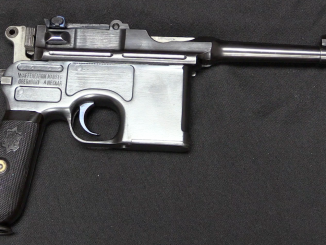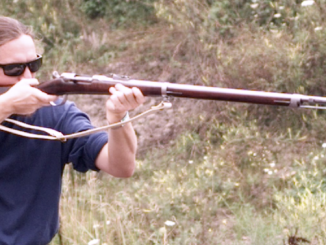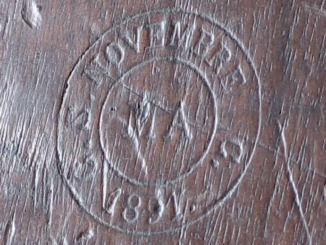Having recently finished guiding a WW1 battlefield tour in France and Belgium, I found myself curious to learn more about the details of French tank development and service. We are used to seeing and hearing about the British tanks, but it was actually the French Renault FT-17 light tank that would set the future of modern tank development. The book I found was Tim Gale’s “French Tanks in the Great War”; a history of both the development and combat use of the three models that saw French service (the Schneider, the St. Chamond, and the FT-17). The developmental story is not really technical in this book – it is focused instead on the logistic and organizational development of the tank service (the “Special Artillery”). The technical development is covered, but not in much detail.
Where the book is loaded with detail is in the combat history of the tanks. From the Nivelle Offensive in 1917 through the end of the war, Gale describes the actions of the tank units deployed to each major unit. This information comes form the original after-action reports of the French military archives, and is loaded with details, often down to the actions of individual tanks. What we see from this is a very interesting evolution of French tank doctrine, from a shaky start when no-one had any experience in the employment of tanks (and when a poor performance could have jeopardized their whole existence) to the fall or 1918 when the art of tank employment (which was really the art of combined arms operation, including infantry, tanks, aircraft, and artillery together) was really coalescing as a proven doctrine.
The ties to small arms are a bit slim, but the book does discuss German anti-tank weaponry and tactics, including the deployment in 1918 of the tankgewehr AT rifles. In my opinion, the understanding of tanks is essential to a proper well-rounded understanding of the First World War, but this is definitely not a book heavy on small arms information. For the price, though (around $20 on Amazon at the time of this writing), it is a wealth of information and I would definitely recommend it.




Glad to see this featured – it already having a rare space on my groaning and crowded shelves. Having bought it unseen and not expecting much. But found it perhaps the best source on the subject in English (sadly my only ‘just’ language) – their being regretfully less such than I would like.
This is a natural extension of small arms field and I welcome any new feature on the subject. After all, Forgotten Weapons is general term to cover much more than infantry weapons.
“(…)Renault FT(…)”
As video camera already existed there exist some footage which survived to our times:
http://www.landships.info/landships/tank_articles.html?load=/landships/tank_articles/Renault_FT17_Videos.html
As you can see these machines were not moving super fast, but were able to travel in harsh terrain.
Could not open the video, but here is at least picture
http://bright-cars.info/uploads/renault/renault-ft-17/renault-ft-17-04.jpg
Yes, this was very ‘modern’ tank for its time.
Time to refer all to “The Chieftain’s Hatch” channel on YouTube: US Army officer turned war-gaming consultant takes you on guided tours of armor. Plus he’s of Irish origin, a veteran tanker from the Middle East, and very knowledgeable and witty. He specifically mentions this Renault as the tank that set the standard for all future designs.
I visited his page couple of times in past and concur with your description. I thought he was an ex-British tank officer since his accent is quite pronounced (at least in my ear). Yes, he is a good source for tanks.
1) The FT-17 was, historically, a great tank as it set the pattern for almost all tanks since – driver’s compartment, fighting compartment topped by 360 degree rotating turret with main armament, engine compartment.
It was used by just about everybody (Afghanistan to Yugoslavia, alphabetically) and lasted into WW2 as a fighting vehicle. Some were even used as pillboxes in Afghanistan in the 1980’s and the US discovered four in the back lot at an Afghan Army base in 2004. Several were sent back to the US as the Army didn’t have an example in its museum collection
2) Connection to small arms – some were “male” tanks with a short 37mm Puteaux SA 1918
gun and some were “females” armed with the Hotchkiss 8mm Mle 1914 machinegun
The British “Whippet” tank was armed entirely with Hotchkiss machine guns;
https://m.warhistoryonline.com/wp-content/uploads/2019/02/kskjuwfu.jpg
Most “light tanks” between the wars were in fact machine gun carriers, intended for infantry support as with the FT-17. Few had actual cannon, and most were not even capable of mounting even something as small as a 37mm or two-pounder.
cheers
eon
Not totally outside the subject of tanks so. I am quite excited as I just saw my second only example of a mauser tankgewehr. My wife and I were driving upcountry from Pau to home here in the south charente(s.w. France)
We stopped to look at a benedictine monestry in the small village of Saint Ferme
In the monastry is the town hall and as I peered through the locked glass door there was a tankgewehr hung on the far wall. The only other one I have seen was at the military museaum in Ottawa canada So the next time we go to see my daughter we will try to be there when the town hall is open
My father saw a ww1 captured tankgewehr fired at camp Shilo in manitoba canada in 1946. Apparently the chap firing the gun braced his back against a wall and the resulting recoil broke his collar bone
Didn’t the US Ordnance Corp. like the FT-17 to the point they attempted to license build a copy? Had opportunity to examine one years ago. Always wondered how the US produced one’s might have faired had production caught up to plan.
They did build a US copy, the M1917. Of the 950 built, 250 were still around in 1940 when they were sold as “scrap metal” to Canada. They finished their days as training vehicles for the RCAC at Camp Borden, Ont. No US built vehicles ever left North America – the intent was to ship units equipped with them to France in the Winter of 1918-19, along with the Anglo-American Mark VIII heavy tank, for Plan 1919, the joint Allied offensive in the Spring of that year to crush the German Army – but events in der Vaterland rendered that unnecessary.
If you want to see an operational FT-17 tank, go to The Museum of the American GI, in College Station, Texas. The museum hosts a living history weekend each spring and fall.
Thanks for the information. I’ve never read this book, but it seems to be interested. Besides, I’m looking for different books, sources, and info to read not only because I’m interested in history but also because I work on a big educational project, and it covers a huge period of time ( from 1800 to 1950 ). And I need a lot of information to find and analyze. This site is one of the best because it has provided me with a lot of info about weapons and book reviews. And some time ago, I came across this page https://supremestudy.com/essay-examples/war-of-1812/ which provided me with some informative War of 1812 essay examples, and I found there interesting info pieces which helped me with writing about that period of time. And now I’m also looking for something more related to weapons and so on. But I still have plenty of time, so I’m sure I’ll find something useful.